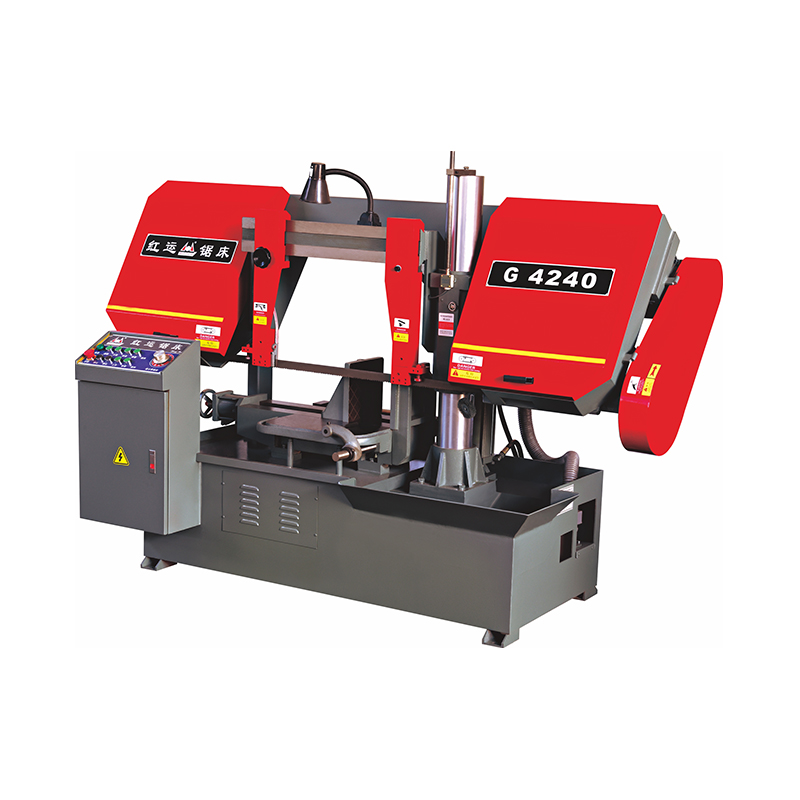Gantry Horizontal Metal Band Saw: Balancing Operational Cost and Long-Term Value
For businesses involved in metal processing, investing in a gantry horizontal metal band saw is a decision that demands careful financial consideration. While the upfront purchase price often catches immediate attention, the true economic impact of this equipment unfolds over its entire service life. To make a well-informed choice, it is essential to look beyond initial costs and examine how ongoing expenses intersect with the machine’s performance and value contribution over time.

Breaking Down the Financial Landscape: Initial vs. Ongoing Costs
A comprehensive financial evaluation of a gantry horizontal metal band saw should encompass two core categories: one-time initial investments and recurring operational expenditures, each carrying a distinct weight in the total cost of ownership.
The Initial Investment: Laying the Foundation
The initial outlay goes beyond just the machine’s sticker price. It includes expenses for transporting the equipment to the workshop, which may involve specialized logistics due to the saw’s size and weight. Professional installation is another key component, as proper setup ensures safety, accuracy, and optimal performance from the start—cutting corners here can lead to costly issues later. Additionally, initial operator training is a necessary investment. Ensuring that staff understand how to operate the machine correctly, adjust settings for different materials, and follow basic safety protocols helps prevent errors, reduce downtime, and extend the equipment’s lifespan.
Recurring Operational Costs: The Ongoing Commitment
Ongoing costs are the expenses that accumulate with regular use and significantly impact the machine’s long-term affordability. Blade replacement stands out as a major recurring cost, as band saw blades are consumables that wear down with each cut. Electrical power consumption is another steady expense, driven by the machine’s main motor, hydraulic systems for feeding and clamping materials, and coolant pumps that maintain cutting temperature and lubrication. Routine maintenance supplies, such as lubricants, filters, and replacement guides, also contribute to operational costs. Finally, labor costs associated with operating the machine, including the time spent monitoring cuts, changing blades, and performing basic upkeep, are part of the ongoing financial commitment.
Key Factors Shaping Long-Term Value and Cost Efficiency
The relationship between cost and value is influenced by several operational and design-related factors that directly impact how efficiently the saw performs over time.
Blade Management: Extending Lifespan to Reduce Costs
Blade consumption is a major variable in operational costs, so maximizing blade lifespan is crucial. The machine’s design plays a key role here—features that allow for precise control of feed pressure help avoid excessive blade wear, as too much pressure can dull blades quickly, while too little leads to inefficient cutting. Stability during operation also matters; a saw that minimizes vibration ensures even wear on the blade, extending its useful life. Additionally, proper blade tensioning mechanisms and easy access for blade changes reduce downtime and prevent damage that can occur from improper handling.
Energy Efficiency: Lowering Routine Power Expenses
Energy usage contributes significantly to monthly operational costs, making the saw’s energy efficiency a valuable consideration. Machines designed with efficient motors that adjust power output based on the cutting load—rather than running at full power continuously—can reduce electricity consumption. Well-maintained hydraulic systems also operate more efficiently, as leaks or clogged filters force the system to work harder, using more energy. Even small improvements in energy efficiency can add up to substantial savings over the machine’s years of service.
Maintenance Accessibility and Reliability: Minimizing Downtime
Unplanned downtime can disrupt production schedules and increase costs, so a saw’s design for maintainability is a key value factor. Features such as easy access to routine maintenance points—like guide blocks, hydraulic filters, and coolant reservoirs—reduce the time and labor required for upkeep. Machines built with durable components and robust construction tend to experience fewer breakdowns, keeping the workflow consistent. Regular preventive maintenance, made easier by thoughtful design, helps catch small issues before they become major problems, further reducing downtime and repair costs.
Throughput and Labor Efficiency: Maximizing Productivity
The saw’s ability to process material efficiently directly impacts its value. Cutting speed, when balanced with accuracy, increases throughput, allowing the business to handle more orders in less time. Automation features—such as programmable cutting lengths, material feeding systems, or automatic blade tensioning—reduce the need for constant operator supervision. This allows staff to manage multiple tasks simultaneously, improving overall labor efficiency. A productive saw that integrates well into the existing workflow not only offsets operational costs but also enhances the workshop’s capacity to take on more work.
Building a Holistic View of Cost and Value
To evaluate a gantry horizontal metal band saw effectively, businesses should develop a framework that accounts for all costs—initial and ongoing—while weighing them against the machine’s performance capabilities. This includes estimating the expected lifespan of the equipment, projecting annual operational expenses (such as blades, energy, and maintenance), and considering how the saw’s throughput will contribute to revenue. Questions about after-sales support and parts availability are also important; ready access to replacement parts and technical assistance can reduce downtime and maintenance costs when issues arise.
Investing in a gantry horizontal metal band saw is more than just a purchase—it is a long-term commitment that affects a business’s finances and productivity. By moving beyond the initial price tag to consider ongoing operational costs and how design and performance factors influence efficiency and reliability, businesses can gain a clearer picture of the machine’s total cost of ownership. This holistic perspective ensures that the chosen saw not only fits within the budget but also delivers consistent value, supporting smooth operations and sustainable growth for years to come.

 English
English 中文简体
中文简体 русский
русский

